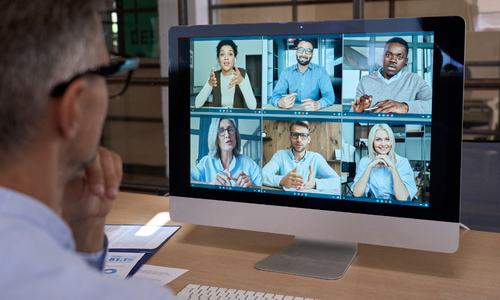By Elizabeth A. Recupero, DO, MPH, MEd.
Published: June 1, 2020
 Successful digital live group discussions are a key part of a meaningful Gather-ed experience. Therefore, it’s important to consider what makes an online meeting exceptional. I can sum this up in one word – ENGAGEMENT. And how can we engage participants virtually? In face to face meetings and presentations, we rely on both visual and non-visual cues. In a virtual world, many of these cues are not there. It is therefore critical to create an environment where group members PARTICIPATE.
Successful digital live group discussions are a key part of a meaningful Gather-ed experience. Therefore, it’s important to consider what makes an online meeting exceptional. I can sum this up in one word – ENGAGEMENT. And how can we engage participants virtually? In face to face meetings and presentations, we rely on both visual and non-visual cues. In a virtual world, many of these cues are not there. It is therefore critical to create an environment where group members PARTICIPATE.
Here are 5 basic tips to enhancing engagement:
Start on time. Emphasize your expectation that all participants must be on time for your virtual meeting. It is very distracting to have multiple interruptions from participants joining late. Setting the ground rules demonstrates that the meeting is professional and has the same expectations as a face to face meeting. The same courtesy and rules for face to face meetings apply to virtual settings. This not only lends structure to your online meeting but demonstrates that you respect and value your participants’ time.
Bring your audience into the room or give voice to all participants. Not all people are comfortable speaking in a virtual setting. In order to have everyone participate virtually, it is important to have all voices heard right from the start. This could be as simple as taking a roll call. Alternatively, you can have a one word “check in”; participants are asked to offer one word to describe what they are thinking or feeling in the moment. For example: excited, interested, bored, hungry, sleepy, anxious, or happy. This “check in” takes only 2-3 minutes and gives everyone the opportunity to speak by creating a psychologically safe environment for expressing ideas. While it is ok to be silent, the thing you want to avoid is the silent participant who is not engaged or who may feel uncomfortable in expressing his/her thoughts.
Encourage participation through the chat function. Using the meeting chat function to encourage the exchange of thoughts and ideas is a great way to know that participants are engaged, especially those participants that are less comfortable participating on camera. It may be difficult to multitask the facilitation of your session while monitoring the chat entries. If you are not able to do this well, simply assign someone to monitor the chat for you. For example, you can say “Jane will be monitoring the chat for me. So if you prefer to post your comments or questions as they arise, I will be checking in frequently to address anything that comes up.” This allows you to create a robust dialogue as you facilitate.
Leave time for end-of-meeting questions. You should set a specific amount of time at the end of your meeting for last thoughts, comments, and questions. I like to close virtual meetings with what I call pluses, minuses, and deltas. After asking if anyone has any last questions, it is very helpful to ask all participants the following 3 questions: 1) What went well or what did you like about today’s discussion? 2) What did not go well or what didn’t you like about today’s discussion ? and 3) What would you change for next time? These questions can be very brief, but it again allows everyone to share their thoughts about the session in which they participated.
End on time and thank your participants. Finally, showing respect to people by ending on time is one of the best ways of demonstrating that you expect everyone to be present during the entire meeting. If for some reason you finish early by a few minutes, it is appropriate to say “I’m giving everyone back 3 minutes of their time.” Your participating Group Members will appreciate this, since it shows you respect their time and value their attention when you are given it.
Elizabeth
A. Recupero, DO, MPH, MEd is a primary care physician and a subject matter
expert in patient centered care. She is nationally known as a facilitator,
speaker, and educator of healthcare professionals on multiple topics including a
Whole Person approach to medicine, communicating effectively with patients,
empathy, and burnout.
